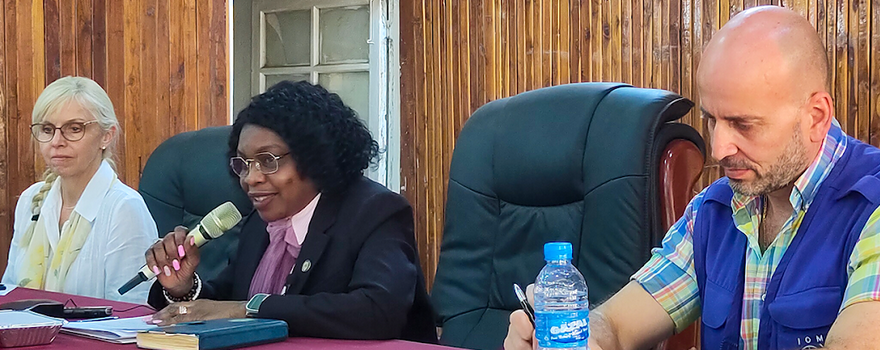The International Organization for Migration (IOM) and the Western Bahr el Ghazal state government launched the Western Bahr el Ghazal Roadmap to Displacement Solutions Project to increase access to sustainable opportunities for the Internally Displaced Persons (IDPs) in the state.
An IOM press release on Wednesday said the Roadmap will build on South Sudan’s National Strategy and Action Plan for Durable Solutions.
The two-year, USD 5 million Norway government-funded project is part of IOM’s initiatives, along with other humanitarian partners, to support government efforts in finding sustainable solutions for IDPs in Wau’s Naivasha and Hai Masna camps.
Riad Marrow, IOM South Sudan Head of Sub-Office said that as relative peace returns and conditions improve in the region, they see this as a major opportunity to facilitate communities to get back on their feet and reestablish their normal lives.
“We always advocate for incremental approaches for durable solutions to displacement, and in Wau, we started this with the technical support we provided to the government in designing a roadmap last year,” he said.
According to IOM, the state government, which prepared and designed the roadmap, will coordinate the identification and facilitation of durable solutions for the IDPs, and the initiative will also benefit host community members according to their needs.
For her part, Western Bahr el Ghazal State Governor Sarah Cleto Hassan Rial said the security situation in the state has improved dramatically.
“As a result, we see many people returning – both refugees and IDPs. People are coming to Wau to find peace and everyone has the right to return voluntarily,” she said. “This project is therefore a government initiative to facilitate durable solutions, supported by IOM. We thank Norway for its generous donation. For years we have been talking about solutions but now the time for implementation has come.”
IDPs who will opt for local integration will benefit from multi-sectoral assistance such as documentation for housing, land, and property (HLP) rights; water, sanitation, and hygiene (WASH) services; protection and health services; as well as livelihood assistance, while those deciding on voluntary return or relocation will benefit from referrals to other humanitarian and development partners for assistance, according to IOM.
A chairperson from the camp management committee says that the number of people in the camp has decreased over the past years.
“The people who remained do not have anywhere to go. Access to land is a major problem,” he said. “People either have no land, or they cannot reach it or invest in it. Once these issues are addressed, there will be no more displacement.”
The Ambassador of Norway to South Sudan, Linken Nymann Berryman, speaking during the launch event in Wau, said South Sudan has over 2.2 million displaced people within the country.
“With this program, we want to do our part to find durable solutions for the people of Naivasha Camp and Hai Masna Collective Centre,” Nymann said. “Collectively, the government, community, IOM, and associated development partners will put in place solution pathways identified by the people themselves. At the same time, we must not forget that there are many more IDPS across the country. We hope that the project will draw attention to the plight of IDPs nationwide and highlight the need for greater government engagement to prevent the causes and mitigate the consequence of displacement.”
IOM’s Marrow said that the initiative sets an example for other states in South Sudan and neighboring countries to replicate and transition their cooperation with stakeholders from humanitarian aid to a more sustainable, development-oriented partnership.
According to IOM’s Displacement Tracking Matrix DTM), more than 9,000 individuals from both the Naivasha IDP site and Hai Masna collective center and another 150,000 people from the host town of Wau will benefit from this Norwegian government-funded project.




